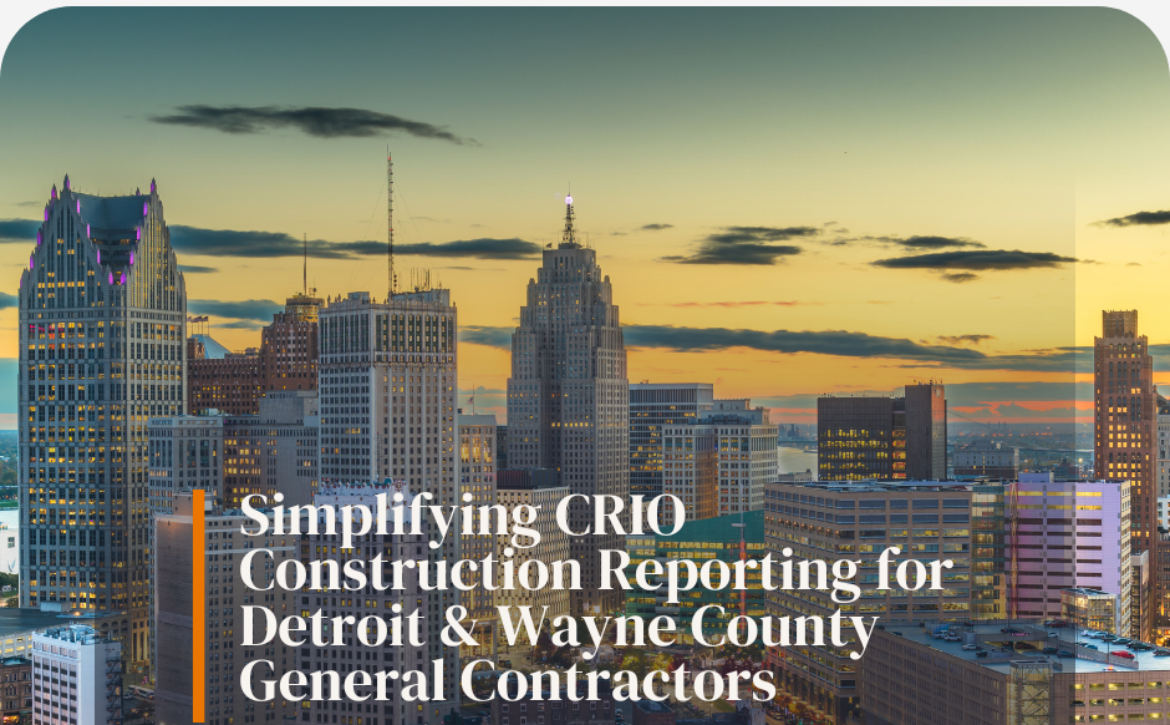InSight Minute: Can You Meet the Prevailing Wage Requirements for your Project?
There are a many new federal programs that provide funding or economic incentives like tax credits, grants and loans to organizations in many different industries that are vital to our economy and infrastructure.
A key requirement that must be met for many of these programs is to ensure that workers on the projects are receiving a prevailing wage. Since this is a new concept for a lot of these industries, representatives are seeking to better understand the requirements and concept of prevailing wage.
According to the U.S Department of Labor, prevailing wage is defined as the average wage paid to similarly employed workers in a specific occupation in the geographic area of intended employment. While this may be a new concept for you, it doesn’t have to be difficult to address and there are tools that can help you manage this easily and effectively.
In this month’s InSight Minute we’re going to discuss some of the many different types of programs that may be receiving this increased investment, and how to more easily manage prevailing wage, and other workforce requirements like tracking of apprentices.
As you review the various programs that may affect you, know that no matter which industry you may be in, you can reach out to SkillSmart.
Following are some of the programs and industries that may require tracking of prevailing wage and apprentices.
The CHIPS and Science Act invests $280 billion to bolster US semiconductor capacity, catalyze R&D, and create regional high-tech hubs and a bigger, more inclusive STEM workforce. In an effort to increase the amount of semi-conductors manufactured in the US to support these activites, the federal government made a significant investment in the form of grants, loans, and loan guarantees support various organizations in this important sector. Following are some of the impacted industries.
- Semiconductor manufacturing – Includes subsidies for building new fabrication plants and expanding domestic production capacity.
- Telecommunications – Funding to support 5G deployment and bolster supply chains.
- Automotive – Investments in electrification and autonomous vehicles which rely on advanced semiconductors.
- Defense – Research grants for developing specialized chips to meet national security needs.
- Technology – Broad support for advancing semiconductor-enabled technologies like AI and quantum computing.
The Broadband Equity, Access, and Deployment (BEAD) Program, provides $42.45 billion to expand high-speed internet access by funding planning, infrastructure deployment and adoption programs throughout the U.S.
The Bipartisan Infrastructure Law supports a number of policies and programs that generally include eight broad areas—clean energy projects and infrastructure; manufacturing and industrial transformation; water; buildings and schools; fairness for workers and communities; community resilience; transportation; and methane and natural gas distribution.
It includes $550 billion in new federal infrastructure funding over five years to repair, rebuild, and modernize America’s bridges, transit systems, water infrastructure, and more. While more than half of the bill’s funding is for transportation infrastructure—including surface transportation, airports, zero-emissions school buses, electric vehicle (EV) charging, ports, public transit, railways, and more—it also provides significant funding for broadband, the power grid, water infrastructure, resilience, and legacy pollution.
The Inflation Reduction Act (IRA) is an approximately $740 billion package, with nearly $400 billion earmarked for energy and climate projects, and makes several clean energy tax incentives available to organizations that satisfy certain prevailing wage and apprenticeship requirements.
There is a provision that indicated projects had to “begin construction” by January 28, 2023 in order to be exempted from the prevailing wage and apprenticeship requirements, as determined under the existing begin-construction principles. So, most projects for organizations in the following areas that may be eligible for these tax incentives must likely meet the prevailing wage and apprentice requirements.
- Clean Energy;
- Clean Technology Manufacturing;
- Industrial Transformation;
- EV Deployment, Manufacturing, and Supply Chain;
- Transmission;
- Buildings;
- Energy Transition for Workers and Communities; and
- Resilient and Healthy Communities.
In general, an organization that meets the prevailing wage and apprenticeship requirements will multiply the base amount of the tax incentive (credit or deduction) by five. Increased credit and deduction amounts are available for taxpayers satisfying prevailing wage and apprenticeship requirements under the following sections of the Internal Revenue Code (Code):
- Section 30C alternative fuel vehicle refueling property credit
- Section 45 renewable electricity production credit
- Section 45Q credit for carbon oxide sequestration
- Section 45V credit for production of clean hydrogen
- Section 45Y clean electricity production credit
- Section 45Z clean fuel production credit
- Section 48 energy credit
- Section 48C qualifying advanced energy project credit
- Section 48E clean electricity investment credit
- Section 179D energy efficient commercial buildings deduction
Increased credit amounts are available for taxpayers satisfying prevailing wage requirements under:
- Section 45L new energy efficient home credit (apprenticeship requirements do not apply)
- Section 45U zero-emission nuclear power production credit (apprenticeship requirements do not apply)
SkillSmart’s InSight IQ technology becomes your ally in addressing prevailing wage requirements in any and all of these programs – streamlining data collection, monitoring, and reporting. Ensure your projects not only benefit the environment but also meet compliance standards effortlessly.









